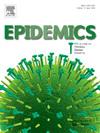核实地理上不同人群的传染病情景规划
IF 2.4
3区 医学
Q2 INFECTIOUS DISEASES
引用次数: 0
摘要
面对COVID-19大流行,流行病模型的出版物激增,人们对捕捉接触网络和人口地理流动的兴趣重新燃起。在建模界,对于时空epi建模的最佳实践,特别是在感染率公式和潜在的接触或混合模型方面,仍然普遍缺乏共识。我们在数学上验证了文献中几个常见的建模假设,以证明某些选择何时可以在不同的地理分辨率、人口密度和模式以及混合假设中提供一致的结果。最常见的感染率公式,即计算成本较低的人均感染率假设,无法通过异质人群和重力加权假设的一致性检验。未来在时空疾病建模方面的建模工作应该警惕这一限制,特别是在处理更异质或稀疏的种群时。我们的结果为测试提供了指导,即使当模型输入掩盖了由于对称性或同质性造成的潜在问题时,模型也保留了理想的属性。我们还提供了执行这种类型的验证的配方,加强决策支持工具。本文章由计算机程序翻译,如有差异,请以英文原文为准。
Verifying infectious disease scenario planning for geographically diverse populations
In the face of the COVID-19 pandemic, the literature saw a spike in publications for epidemic models, and a renewed interest in capturing contact networks and geographic movement of populations. There remains a general lack of consensus in the modeling community around best practices for spatiotemporal epi-modeling, specifically as it pertains to the infection rate formulation and the underlying contact or mixing model.
We mathematically verify several common modeling assumptions in the literature, to prove when certain choices can provide consistent results across different geographic resolutions, population densities and patterns, and mixing assumptions. The most common infection rate formulation, a computationally low cost per capita infection rate assumption, fails the consistency tests for heterogeneous populations and gravity-weighting assumptions. Future modeling efforts in spatiotemporal disease modeling should be wary of this limitation, particularly when working with more heterogeneous or sparse populations.
Our results provide guidance for testing that a model preserves desirable properties even when model inputs mask potential problems due to symmetry or homogeneity. We also provide a recipe for performing this type of verification, strengthening decision support tools.
求助全文
通过发布文献求助,成功后即可免费获取论文全文。
去求助
来源期刊

Epidemics
INFECTIOUS DISEASES-
CiteScore
6.00
自引率
7.90%
发文量
92
审稿时长
140 days
期刊介绍:
Epidemics publishes papers on infectious disease dynamics in the broadest sense. Its scope covers both within-host dynamics of infectious agents and dynamics at the population level, particularly the interaction between the two. Areas of emphasis include: spread, transmission, persistence, implications and population dynamics of infectious diseases; population and public health as well as policy aspects of control and prevention; dynamics at the individual level; interaction with the environment, ecology and evolution of infectious diseases, as well as population genetics of infectious agents.
 求助内容:
求助内容: 应助结果提醒方式:
应助结果提醒方式:


